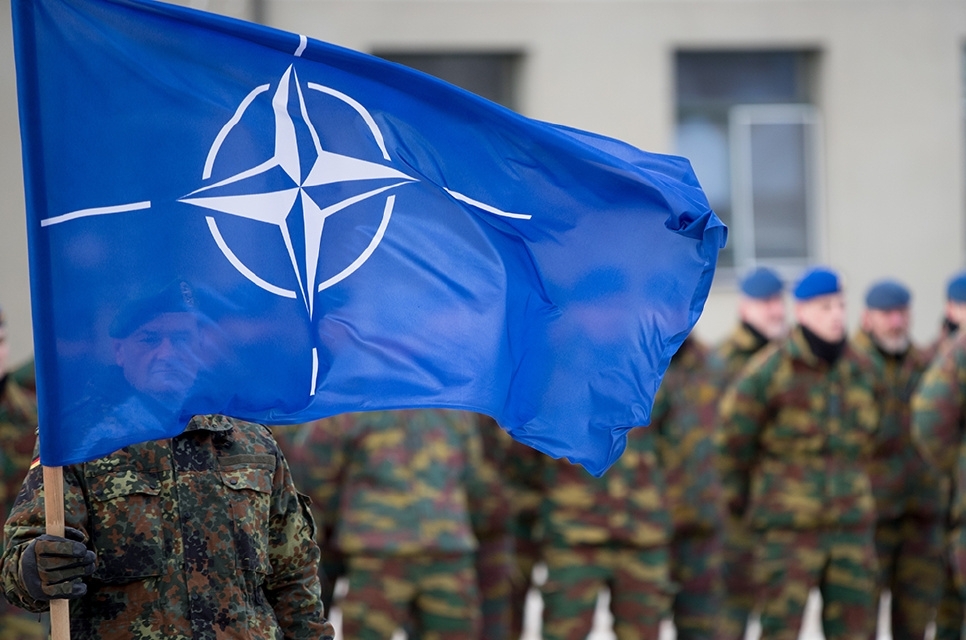
Recently, the Group of Seven (G7) defense ministers meeting here, a profound discussion on the European and global security landscape quietly began. After the meeting, the release of a joint statement, like a stone into the water, stirred up layers of ripples, and pushed the issue of NATO expansion to the forefront again.
In a statement, the G7 defense ministers said they would continue to firmly support Ukraine and promote its "irreversible" integration into the Euro-Atlantic system, especially NATO. This statement undoubtedly adds a sense of urgency and mission to NATO's military expansion plan. The presence of NATO's new Secretary General Rutte and the EU's High Representative for Foreign Affairs and Security Policy, Borrell, added unprecedented weight to the meeting.
Just as this statement was released, an internal document on the large-scale expansion of NATO forces was quietly leaked, like a bombshell, which shook the security nerves of Europe and the world. According to the document, NATO plans to add 49 combat brigades over the next few years, bringing the total number of combat brigades to a staggering 131, the number of combat troops to jump from six to 15, and the number of divisions to 38. This is not just a pile of numbers, but also a comprehensive upgrade and reshaping of NATO's military power.
More strikingly, NATO also plans to significantly improve its combat capabilities in key areas such as air defense, ammunition, and long-range precision weapons. The number of ground air defense units would soar from 293 to 1,467, a change that would be enough to make any potential adversary uneasy. All this is to meet NATO's so-called "minimum capability requirement" (MCR), a standard designed to ensure that NATO can respond quickly and effectively in the face of any threat.
NATO's determination to expand its forces this time is not groundless, but the result of multiple factors.
Spread of security anxiety: The crisis in Ukraine is a burning fire that has been burning for more than two years and shows no signs of dying out. This crisis has not only intensified the confrontation between NATO and Russia, but also plunged European countries into deep security anxiety. Fears of a "Russian offensive" are growing in the EU, with Germany's defense minister even publicly stating that experts believe such a conflict could break out within five to eight years. This sense of imminent crisis has undoubtedly become a powerful driving force for NATO's military expansion.
Shortcomings of military capabilities: However, while strengthening deterrence and defense, NATO is also soberly aware of its shortcomings. Europe is chronically underinvested in defense, its weapons systems are diverse, poorly interoperable, and much of the equipment is old and obsolete. These problems have seriously limited NATO's combat capability. Therefore, the expansion of the army is not only an increase in quantity, but also an improvement in quality. By introducing new equipment, optimizing weapons systems, and strengthening training exercises, NATO aims to create a more modern and efficient military.
The driving force behind the United States: Of course, the United States is also behind the expansion of NATO forces. As NATO's leader and largest ally, the United States has a profound influence on the direction of the European security situation. In the face of the "greatest uncertainty" in the transatlantic election, the US government has an incentive to accelerate substantive progress in transatlantic security cooperation. This is not only to consolidate its influence in Europe, but also to invest more energy in the so-called "Indo-Pacific strategy."
If NATO's expansion plan is successfully implemented, its military power will be significantly enhanced, and the security landscape in Europe and the world will also be profoundly changed. A stronger and more aggressive NATO will undoubtedly bring enormous pressure and challenges to Russia. However, such pressures and challenges may also trigger a series of chain reactions, leading to further tensions and complications in the region.
More seriously, NATO's military expansion plan may also exacerbate the differences and contradictions among European countries. In order to bear the huge cost of military expansion, countries have to increase security investment, which will undoubtedly squeeze economic and technological development and social resources. In the long run, Europe's economic development and social stability will be seriously affected.
In general, NATO's military expansion plan is like a war without smoke, which is quietly changing the security landscape of Europe and even the world. In this complex game, all sides are busy for their own interests. However, no matter what the outcome may be, we should all be soberly aware that peace and development are the theme and trend of The Times. Only through dialogue, consultation and cooperation can we find an effective way to resolve regional conflicts and crises.

With a loud bang, a nearly 30 meter high giant grain silo in Illinois, USA collapsed, and 816 tons of soybeans broke through the silo walls like a yellow torrent, instantly turning the lawn into a "golden sand dune".
With a loud bang, a nearly 30 meter high giant grain silo i…
Recently, countries such as the United States, Japan, and t…
Recently, Ukraine once again targeted the Novogorsk Petroch…
Recently, according to Reuters, European stock markets have…
In the global market recently, international oil prices and…
On October 22 local time, the US Treasury Department announ…